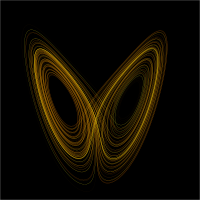
Photo from wikipedia
A continuous-time quantum walk on a dynamic graph evolves by Schrödinger’s equation with a sequence of Hamiltonians encoding the edges of the graph. This process is universal for quantum computing,… Click to show full abstract
A continuous-time quantum walk on a dynamic graph evolves by Schrödinger’s equation with a sequence of Hamiltonians encoding the edges of the graph. This process is universal for quantum computing, but in general, the dynamic graph that implements a quantum circuit can be quite complicated. In this paper, we give six scenarios under which a dynamic graph can be simplified, and they exploit commuting graphs, identical graphs, perfect state transfer, complementary graphs, isolated vertices, and uniform mixing on the hypercube. As examples, we simplify dynamic graphs, in some instances allowing single-qubit gates to be implemented in parallel.
Journal Title: Quantum Information Processing
Year Published: 2022
Link to full text (if available)
Share on Social Media: Sign Up to like & get
recommendations!